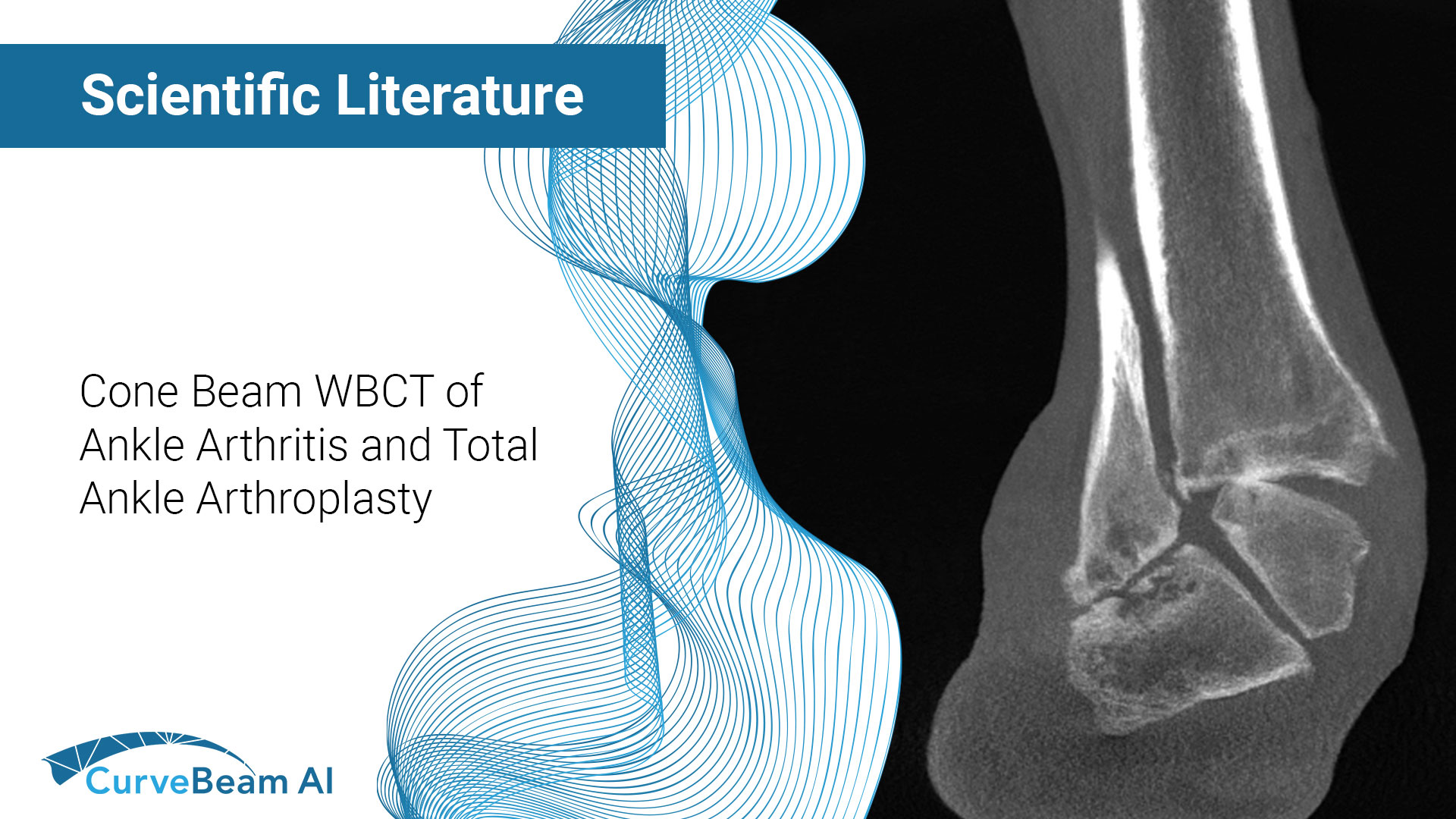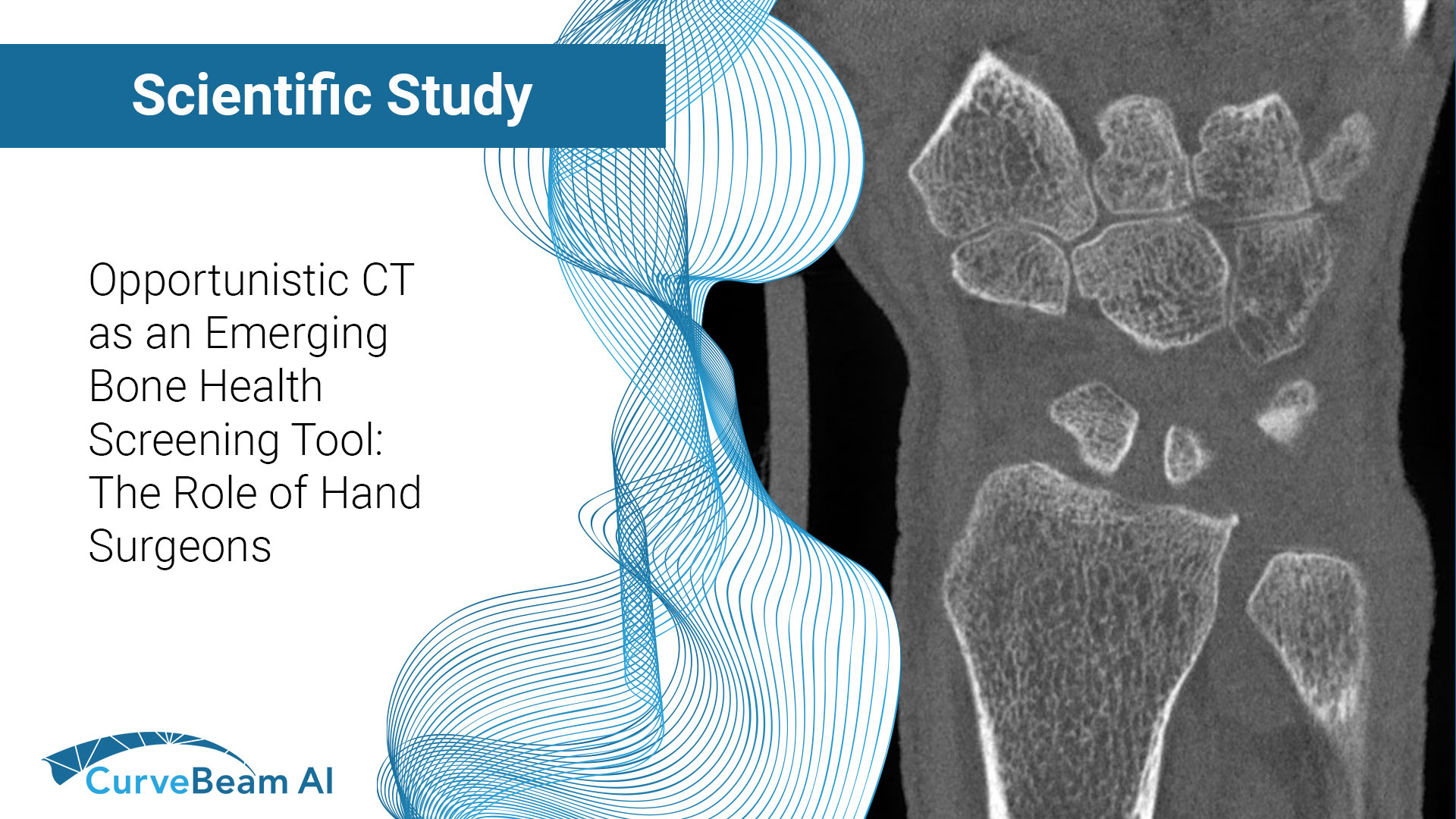Fragility fractures are often the first visible sign of underlying osteoporosis but too often, they…

Cone Beam Weight Bearing Computed Tomography of Ankle Arthritis and Total Ankle Arthroplasty
Key Points:
- Cone Beam CT (CBCT), specifically WBCT three-dimensional (3D) visualization approach allows for a more accurate assessment of foot alignment with attention to planus, cavus, varus or valgus deformities.
- Post-operatively, weight bearing CT (WBCT) has the potential to better detect possible weight bearing related complications than conventional CT.
- WBCT helps with the evaluation of osteoarthritis (OA) as hindfoot axis, fibula position to the tibia, and joint space analysis in 3D provide a clearer picture of the pathology when compared to X-Ray.
The following is a summary of a paper published in Volume 28 Issue 3 of Foot and Ankle Clinics. After a literature review, the authors suggested weight bearing CT should be ordered prior to total ankle replacement to accurately assess foot and ankle alignment. Doing so could help ensure proper deformity correction and help avoid complications, prolonging the useful life of the prosthesis.
Most ankle OA cases are secondary to unresolved chronic fractures or instabilities. Most patients with ankle OA seek medical help due to progressive joint pain.
In the last decade, CBCT technology has allowed WBCT imaging of the lower extremities. CBCT/WBCT provides several advantages including high-contrast resolution and spatial resolution, fast imaging, reduced radiation, a relatively small size and design, and general lower capitalization cost than conventional CT technology.
Understanding Ankle Osteoarthritis
Researchers are working to optimize OA grading using WBCT. Some methods use classic, but subjective, signs of OA but in a 3D view. Others suggest computational methods that quantitatively score OA based on joint space width. Researchers and industry are introducing software solutions to aid clinicians with the latter.
Hindfoot alignment
WBCT assists with accurate assessment of pre-operative hindfoot misalignment, which is fundamental to plan for a successful correction.
Diagnosing the etiology is essential when selecting the best treatment strategy and achieving satisfactory results in the medium and long term. Several studies have demonstrated that for implant longevity, the resulting and residual hindfoot alignment is a crucial factor influencing clinical and patient-reported outcomes after total ankle replacement (TAR).
Post-operatively, WBCT has the potential to better detect possible weight bearing related complications, such as residual malalignment, aseptic loosening, migration of components, periprosthetic cysts, displacement or fracture of the spacer, OA of neighboring joints, and gutter impingement than conventional CT imaging.
Kepler Alencar Mendes de Carvalho, Nacime Salomão Barbachan Mansur, Cesar de Cesar Netto,
Cone-Beam Weight-Bearing Computed Tomography of Ankle Arthritis and Total Ankle Arthroplasty,
Foot and Ankle Clinics, Volume 28, Issue 3, 2023, Pages 509-528, ISSN 1083-7515, ISBN 9780443181870, https://doi.org/10.1016/j.fcl.2023.04.002.




